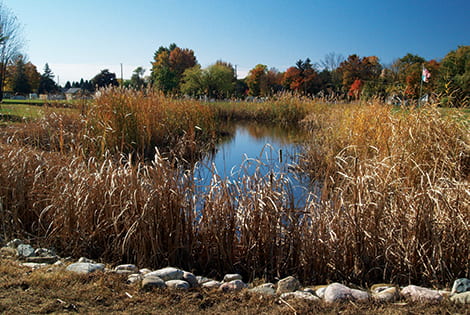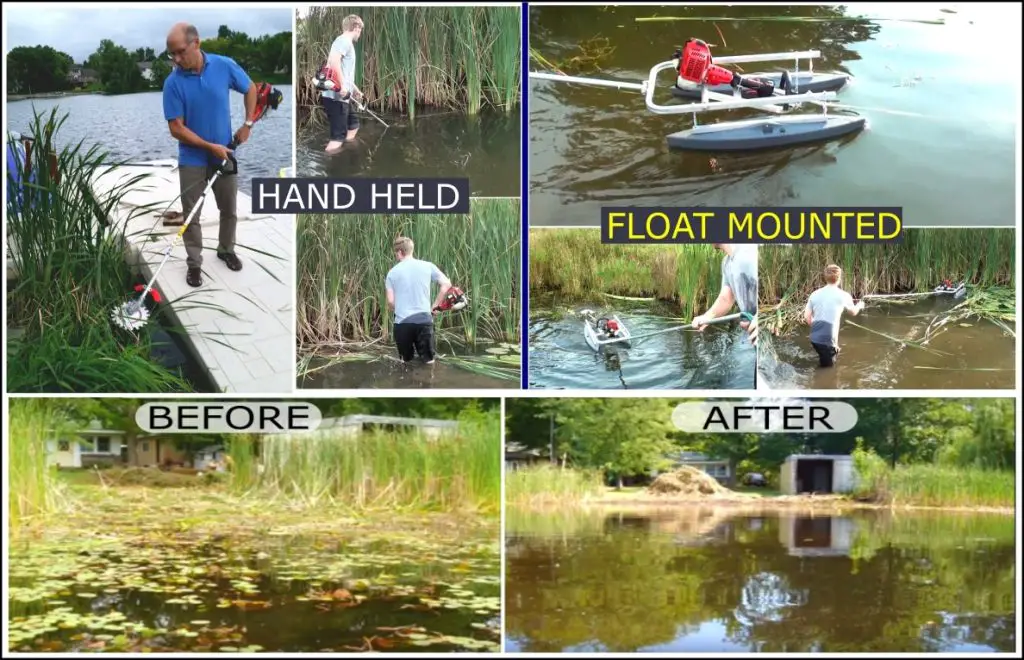Having a pond on your property can be a beautiful addition, providing a serene and natural environment. However, if left unchecked, cattails can quickly take over a pond, affecting its aesthetic appeal and potentially harming the ecosystem. In this article, we will explore some effective methods to remove cattails from your pond and restore its beauty.
What are Cattails?
Cattails are tall, slender plants that typically grow in wetland areas such as ponds, lakes, and marshes. They are characterized by their distinctive brown, cylindrical seed heads and long, narrow leaves. While cattails can provide habitat for wildlife and help stabilize shorelines, an overgrowth of cattails can cause problems for ponds, including reduced water flow, oxygen depletion, and an unsightly appearance.
Manual Removal
One of the most straightforward methods of removing cattails from a pond is through manual labor. This method involves physically pulling the cattails out of the water, roots and all. While manual removal can be time-consuming and labor-intensive, it is an effective way to control cattail growth, especially for smaller pond areas.
Steps for Manual Removal:
- Put on waterproof gloves and waders to protect yourself from water and potential sharp objects.
- Grasp the cattail plant near the base and pull firmly to uproot it from the soil.
- Collect the removed cattails and dispose of them properly to prevent them from re-establishing in the pond.
Use of Herbicides
For larger pond areas or more extensive cattail infestations, the use of herbicides may be necessary. Herbicides can be effective in controlling cattail growth but should be used with caution to avoid harming other aquatic plants and wildlife in the pond.
Types of Herbicides for Cattail Control:
| Herbicide Type | Application Method |
|---|---|
| Glyphosate-based Herbicides | Apply directly to the cattail foliage or stems. |
| 2,4-D-based Herbicides | Effective for controlling broadleaf plants like cattails. |
Before using herbicides in your pond, it is essential to research the specific type of herbicide that is safe and suitable for aquatic environments. Follow the manufacturer’s instructions carefully and consider seeking advice from a professional if needed.
Mechanical Removal
Mechanical methods can also be employed to remove cattails from ponds, particularly in larger bodies of water. Equipment such as aquatic weed cutters, rakes, and dredgers can help cut, pull, or scoop out cattails effectively.
Equipment for Mechanical Removal:
- Aquatic Weed Cutter: Used to cut cattails at their base for easier removal.
- Rake: Helps in pulling out cut cattails from the water.
- Dredger: Removes cattails and sediment from the pond bottom.
When using mechanical equipment, ensure proper safety precautions are taken, and the equipment is operated by trained individuals to prevent accidents and damage to the pond ecosystem.

Credit: www.thepondguy.com
Biological Control
Biological control methods involve introducing natural predators or competitors to cattails to limit their growth. While this method may take longer to show results, it can be a sustainable and environmentally friendly way to manage cattail populations in ponds.
Biological Control Agents:
- Grass Carp: Herbivorous fish that feed on aquatic vegetation, including cattails.
- Cattail Weevils: Insects that specifically target cattail plants for feeding and reproduction.
Before introducing any biological control agents to your pond, ensure that they are suitable for the ecosystem and will not cause harm to other species or disrupt the balance of the pond environment.

Credit: www.youtube.com
Regular Maintenance
Preventing cattail overgrowth in your pond requires ongoing maintenance and monitoring. Regularly inspect the pond for any signs of cattail regrowth and take prompt action to address the issue before it becomes unmanageable.
Tips for Maintaining a Cattail-Free Pond:
- Remove any new cattail shoots as soon as they appear to prevent spreading.
- Monitor water quality to ensure optimal conditions for other aquatic plants and wildlife.
- Consider planting native aquatic vegetation to outcompete cattails for resources.
Conclusion
Removing cattails from your pond is essential to maintain its health, aesthetics, and functionality. Whether using manual, chemical, mechanical, or biological methods, it is crucial to choose the most suitable approach based on the size of the pond, the extent of cattail infestation, and environmental considerations.
By employing the right techniques and staying diligent with pond maintenance, you can effectively control cattails and create a balanced aquatic ecosystem that thrives for years to come.





